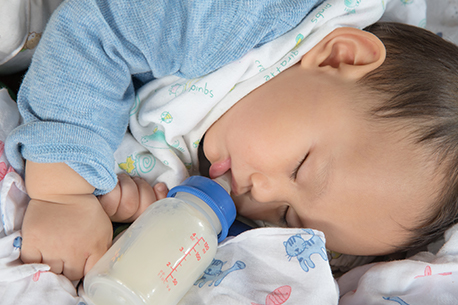Birth Defects
Reducing the Leading Cause of Infant Deaths
We are pioneering efforts to reduce birth defects through our innovative research endeavors. If you are new to this field, you may wonder “what are birth defects?” While still in the womb some babies have problems with how their organs and body parts form or, once formed, how they work. These are called birth defects.
There are more than 4,000 different kinds of birth defects, ranging from minor to major. Birth defects can occur at any stage of pregnancy. Some birth defects are inherited, some are caused by exposure to a harmful product in the environment (called a “teratogen”), and some are caused by a complex interaction of both genetic make-up and environment. But in about 50% of birth defects, the cause is unknown.
Here’s what we’re doing to better understand the causes of birth defects, so we can better prevent and treat them.

California Birth Defects Monitoring Program
The Center is currently contracted to run the State of California Birth Defects Monitoring Program (CBDMP), a long-standing health surveillance program for birth defects. CBDMP has been an active, population based registry since 1982 when the California State Legislature authorized the program to collect data on birth defects, stillbirths, and miscarriages. CBDMP currently monitors over 150,000 births in 10 counties—approximately 30% of the births in California, which represents the state’s geographic, environmental and racial/ethnic diversity. Registry data are used for ongoing surveillance to monitor rates and trends of select birth defects and to provide outcome data for the pregnancy blood samples included in the California Biobank Program.

Identifying the Cause of Gastroschisis
The Center for Better Beginnings is leading research efforts state-wide to study the cause of gastroschisis, a birth defect of the abdominal wall. Our research efforts in this area have examined the potential impact of maternal factors such as nutrition, infections, and inflammation as well as intrauterine vascular accidents.

Impact of Nutrition on Birth Defects
Children’s health is determined by the interactions of a multitude of influences, reflecting a complex process. An additional research effort at the Center is around the theme of nutrition, based on the premise that certain birth defects are connected to acute or chronic changes in maternal and/or fetal nutrition.

Identifying the Unknown Causes of Birth Defects
With our research partners at Rady Children’s Hospital’s Genomics and Systems Medicine Institute, we are working to better understand the genetic underpinnings of birth defects. By partnering with Rady’s, our birth defects experts are building a database to shed light on which genes and which environmental factors cause particular birth defects. The goal is to find new treatments and prevention opportunities for birth defects that currently have no known cause.

Assisted Reproductive Technology
We are partnering with the Center for Disease Control and Prevention’s (CDC) States Monitoring Assisted Reproductive Technology (SMART) collaborative to evaluate birth outcomes associated with assisted reproductive technology (ART) in California. ART includes all fertility treatments in which both eggs and sperm are handled. ART procedures involve surgically removing eggs from a woman’s ovaries, combining them with sperm in the laboratory, and returning them to the woman’s body or donating them to another woman. The SMART Collaborative provides a way for public health agencies to work together to establish better standards around infertility and related issues.